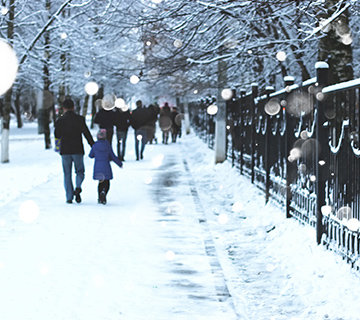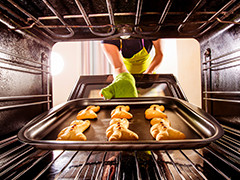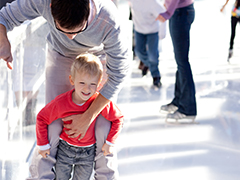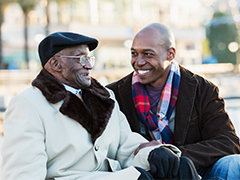Managing Health Conditions in the Winter

Love it or hate it, winter brings freezing temperatures, cloudy skies and heavy snow for many Americans. But what you might not know is that these conditions can also affect health conditions too.
Diabetes
Because flu season ramps up in the winter, those with diabetes need to be cautious: people living with diabetes are susceptible to infections like the flu or pneumonia developing fast. Try to avoid those who are sick, wash your hands frequently and disinfect surfaces in your home or at work.
A person with diabetes should also do their best to stay active to avoid raising their blood sugar. Consider joining a gym or doing exercises at home if you don’t feel comfortable exercising outside. If you are up for getting active outside, make sure your feet are well bundled up. Poor circulation can cause you to lose sensation in your feet and increase your risk for frostbite. Make sure you always moisturize your feet after bathing and always wear warm, dry boots.
Also, it’s important that your hands are warm when checking your blood sugar. The cold can decrease circulation in your hands, which may lead to incorrect blood sugar readings. Also, never store insulin outside, like in your garage or car. Lower temperatures can freeze the vials and may decrease its effectiveness after thawing.
If you haven’t already, be sure to take advantage of the diabetes resources available to you.
High blood pressure
Research has shown that blood pressure readings increase in elderly people during the winter. To keep your numbers in check, make an effort to exercise 30 to 60 minutes per day**. You’ll also need to pay extra attention to what you eat. Try incorporating more fruits, vegetables, whole grains, lean meats, fish, nuts and low-fat dairy in your diet. Avoid foods that are high in saturated fats and sodium. Instead of drinking a lot of alcohol, limit yourself to a glass of red wine with dinner.
Those with high blood pressure can get a free blood pressure monitor through our Hypertension Management Program*. Being able to test your blood pressure at home may help you avoid complications.
Back pain
Ideally, you should also avoid shoveling snow. If you don’t have a snowblower or someone to help out, follow this guide to shoveling with back pain. Be sure you routinely stretch to relieve pain, decrease stiffness and increase mobility**. Do not attempt to treat back pain at home if you experience any of the following symptoms:
- Weight loss that you can’t explain
- Fever over 102°F
- Loss of control of your bowel or bladder
- A history of cancer
- Loss of feeling or strength and any numbness or tingling sensation in your legs
- Problems with your reflexes
*You must be 18 or older to receive this benefit.
**Be sure to always talk to your doctor before you start a new exercise routine.


